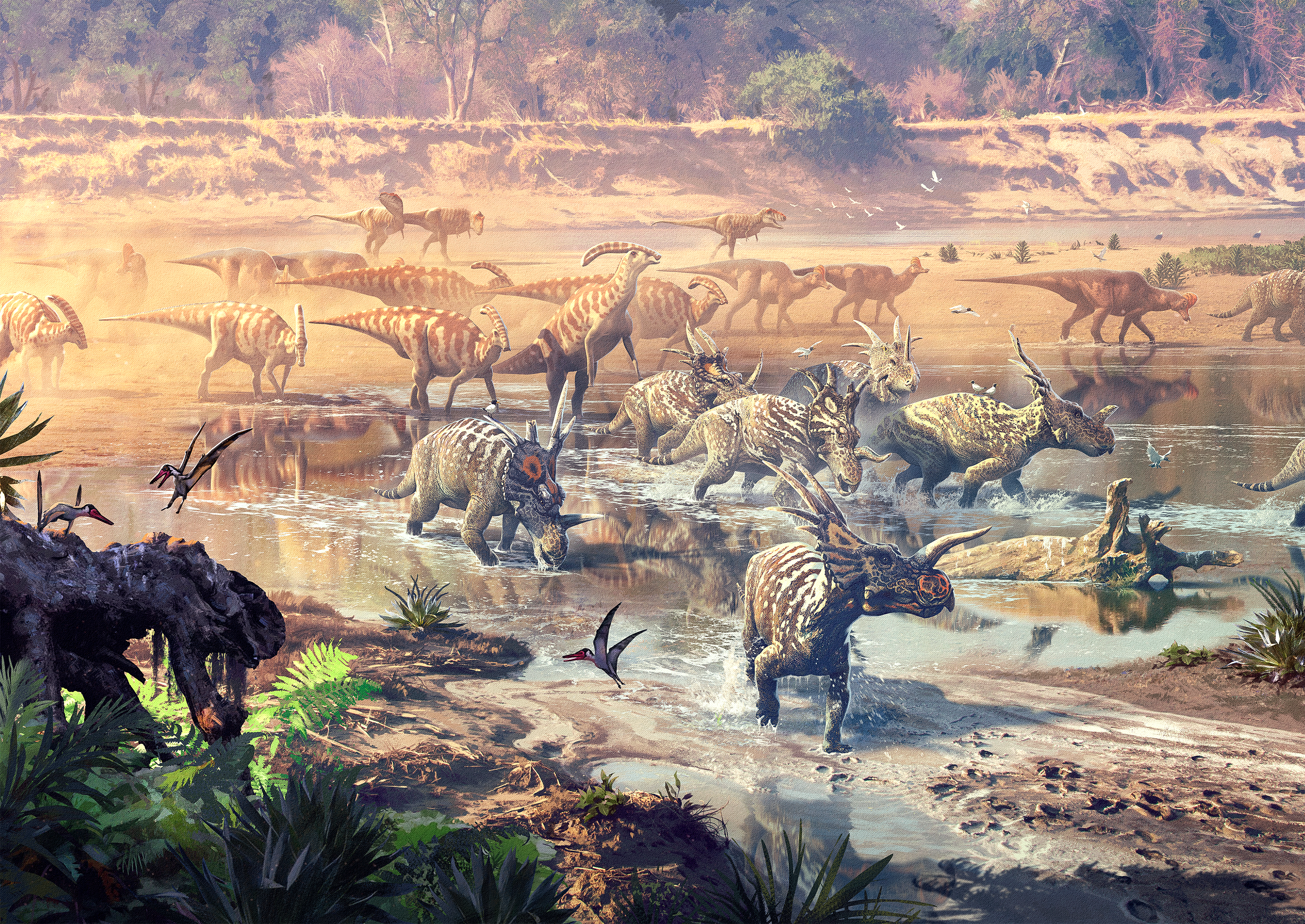The Cretaceous, considered the dinosaurs’ “golden age”, continued the rule of the dinosaurs on land and saw them reach their peak diversity and produce their largest and most fearsome species, while the Earth's flora was revolutionized with the evolution of the first flowering plants.
The third and final geologic period of the Mesozoic Era (informally called “The Age of Reptiles” or “The Age of Dinosaurs”) is the Cretaceous, spanning some 77.1 million years, beginning roughly 143.1 million years ago and ending 66 million years ago. The Cretaceous, considered the dinosaurs’ “golden age”, continued the rule of the dinosaurs on land and saw them reach their peak diversity and produce their largest and most fearsome species, while the Earth's flora was revolutionized with the appearance of the first flowering plants, and new and magnificent reptiles and pterosaurs emerged in the seas and skies. The Cretaceous went out with a bang as a catastrophic asteroid impact in the Gulf of Mexico caused the second most severe mass extinction of all time, and easily the most abrupt, resulting in the end of the Age of Dinosaurs in the geologic blink of an eye!
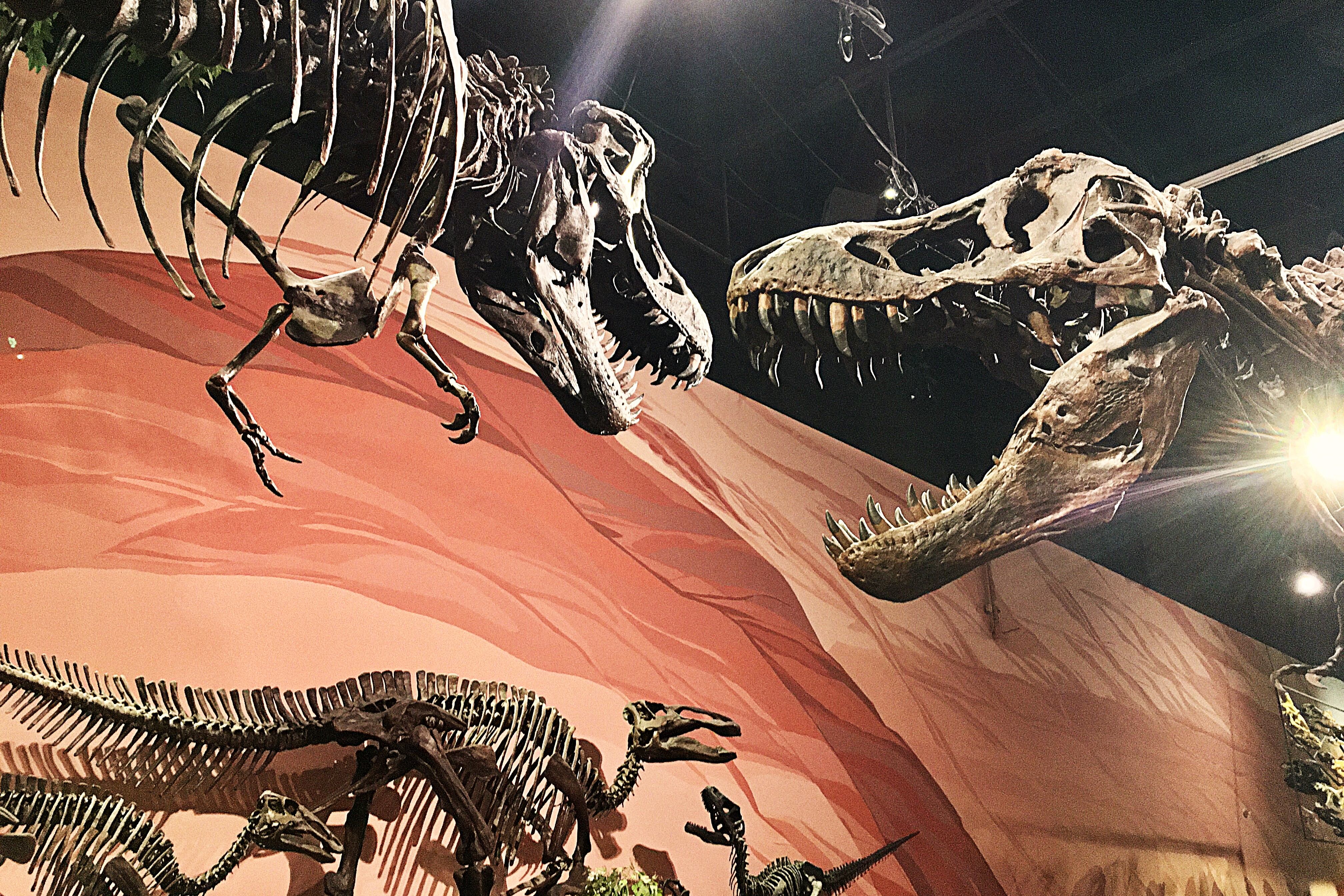
Why is it called the Cretaceous?
The Cretaceous is named after its vast chalk deposits, its name being derived from Latin creta, meaning 'chalk'. The period was described and named in 1822 by Belgian geologist Jean d'Omalius d'Halloy.
How is the Cetaceous divided?
The Cretaceous Period is divided into two epochs, the Early and Late Cretaceous. These epochs are further subdivided into ages or stages. The Early Cretaceous spanned from 143.1-100.5 million years ago and contains the Berriasian (1431-137.5 Ma), Valanginian (137.5-132.6 Ma), Hauterivian (132.6-125.7 Ma), Barremian (125.7-121.4 Ma), Aptian (121.4-113.2 Ma), and Albian (113.2-100.5 Ma) Stages.
The Late Cretaceous spanned from 100.5-66 million years ago and contains the Cenomanian (100.5-93.9 Ma), Turonian (93.9-89.8 Ma), Coniacian (89.8-85.7 Ma), Santonian (85.7-83.6 Ma), Campanian (83.6-72.2 Ma), and the Maastrichtian (72.2-66 Ma) Stages.
Some scientists consider the Albian, Cenomanian, and Turonian to be the unofficial “Middle Cretaceous Epoch, due to it being a transitional period between the Early Cretaceous and Late Cretaceous faunas, with the Turonian ending with a major faunal turnover including the loss of many major animal groups on both land and sea. There are proponents of making the Middle Cretaceous official, but in order to do so it would need to be properly geologically defined.
Visit this link to view the official GSA geologic timescale: https://www.geosociety.org/GSA/gsa/timescale/home.aspx
What was Earth like in the Cretaceous?
During the Cretaceous Period the continents were becoming progressively more separated. The young Atlantic Ocean continued to widen, while the supercontinent of Gondwana began to break up, with South America and Africa separated by the Atlantic, Madagascar and India rifting off of Africa, and Antarctica, Australia, and Zealandia forming a southern continent for a time before these landmasses would also go their separate ways. The Tethys Sea still covered much of Europe, and in the Late Cretaceous, the Western Interior Seaway covered central North America, splitting it into two separate landmasses, Laramidia in the west, and Appalachia in the east. While the Rocky Mountains began their initial rise toward the end of the Jurassic, it was during the Cretaceous that the bulk of the mountain building in the American west took place. By the end of the Cretaceous the continents were beginning to take on their current recognizable shapes and approximate positions, though they still had some way to go yet.
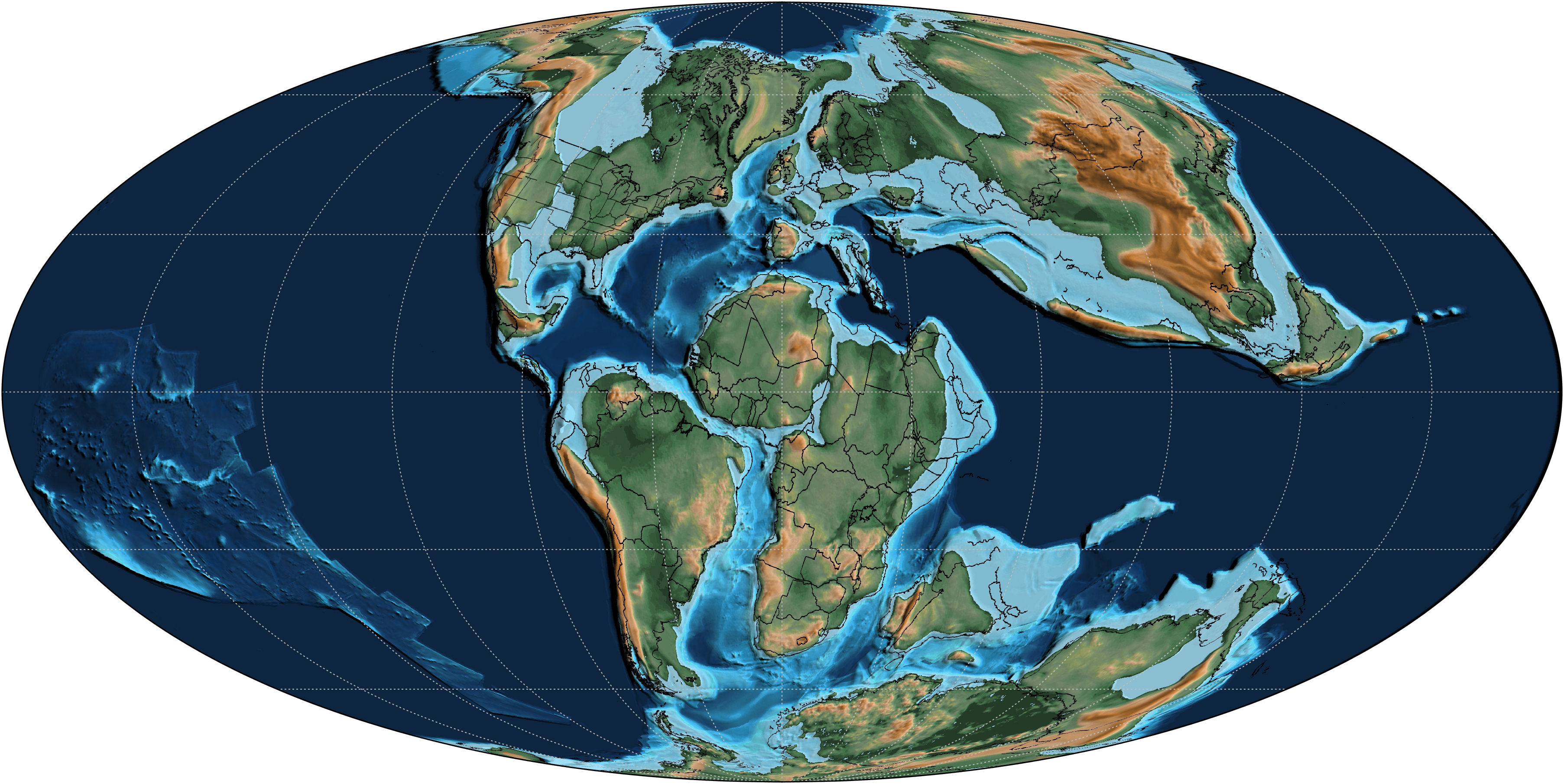
The climate during the Cretaceous was significantly warmer than the present day, thanks to high carbon dioxide levels. Most of the world enjoyed a tropical or subtropical climate with more temperate climates near the poles, where, despite getting cold in the winter, there was still no permanent ice. This being said, global climate varied throughout the Cretaceous, with the middle portion of the Cretaceous (about 111-83.6 Ma) being particularly warm, with temperatures peaking at the Cenomanian-Turonian Thermal Maximum about 94 million years ago. Starting in the Campanian, a general cooling trend occurred through most of the end of the Cretaceous due to falling carbon dioxide levels, except for a warming event in the Late Maastrichtian around 70-69 million years ago, and again around 66 million years ago.
Oxygen levels likely varied throughout the Cretaceous, and estimates for atmospheric oxygen percentage vary, with some suggesting as high as 30%. However, more recent research suggests that on average, oxygen percentage in the atmosphere may have been lower than the present day (21%).
What lived in the Cretaceous?
Dinosaurs remained the dominant terrestrial vertebrates in the Cretaceous, and it was during the Cretaceous that they reached their peak diversity and achieved their greatest sizes. The Early Cretaceous saw a decline and extinction of diplodocid sauropods and stegosaurs, and an increase in ornithopods and ankylosaurs. Macronarian sauropods remained major players in Early Cretaceous ecosystems but began to dwindle in North America toward the end of the epoch. By the end of the Turonian, titanosaurs were the only remaining sauropod lineage, and sauropods had disappeared from North America entirely, until titanosaurs returned to the continent in the Maastrichtian (latest Cretaceous). In their absence, the hadrosaurs, a derived clade of ornithopods came to dominate North American herbivore niches. The Late Cretaceous also saw the evolution of the ceratopsians. Early and middle Cretaceous predator niches were dominated by carcharodontosaurid allosaurs, with dromaeosaurs (raptors), abelisaurs (only in the southern hemisphere), and others operating as lower tiered predators. Spinosaurids, a specialized clade of megalosaurs, dominated around the edges of many aquatic ecosystems. Tyrannosaurs had appeared in the Jurassic, but until the Late Cretaceous were mostly medium-sized predators, with the exception of some proceratosaurid tyrannosaurs from Early Cretaceous China which achieved considerable size comparable to their Late Cretaceous cousins. At the end of the “Middle Cretaceous”, spinosaurs and allosaurs disappeared. In the southern hemisphere, abelisaurs rose to fill the apex predator niche, while in the northern hemisphere, tyrannosaurs, particularly the tyrannosaurids, came to dominate.

Crocodylomorphs continued to dominate semi-aquatic habitats, and some achieved immense size, earning the title of “super-crocs”. It was during the Cretaceous that the first true crocodilians appeared, and they began to replace their other crocodylomorph cousins, and had largely done so by the end of the period. Temnospondyl amphibians continued to dwindle through the Early Cretaceous, with the last known genus going extinct about 120 million years ago.
The sea was also the site of great variety and great change. Ichthyosaurs and marine crocodylomorphs continued to be key players in marine ecosystems, but the latter became extinct during the Early Cretaceous, and the former became extinct at the end of the “Middle Cretaceous”. Plesiosaurs continued to be highly successful, though the fearsome pliosaurs were yet another casualty of the “Middle Cretaceous”. Replacing them as top predators were the newly evolved mosasaurs, marine relatives of snakes and monitor lizards, which appeared about 94 million years ago. Other marine animals in the Cretaceous included giant sea turtles, large sharks and giant predatory fish, and a dizzying variety of ammonites.
The skies of the Cretaceous were still ruled by the pterosaurs, though their diversity seems to have decreased toward the end of the Cretaceous while their size increased formidably. Joining them was a great variety of birds, and by the end of the Cretaceous, the ancestors of all modern birds (Aves) had appeared.
The world of plants changed greatly during the Cretaceous. Conifers still continued to dominate throughout the period, with Araucaria and redwoods still doing especially well. Ginkgoes were still successful, and cycads and bennettitales still persisted, though they had begun to decline by the end of the period. The first true pines and spruces appeared during the Cretaceous, and cypresses came to dominate many wetland environments. In the southern hemisphere podocarps were among the dominant forest builders. About 130 million years ago, the first flowering plants appeared, and they would go on to spread and diversify throughout the Cretaceous, with the likes of palms and magnolias joining the conifers as key constituents in the Cretaceous forests. It is thought that the evolution and spread of flowering plants may have spurred on many of the faunal changes in the Cretaceous, including the shift away from sauropod dominated ecosystems to those dominated by hadrosaurs and ceratopsians. If nothing else, the arrival of flowers changed the insect world, with the first bees, moths and butterflies appearing during the Cretaceous. Grass seems to have appeared sometime in the Albian Stage of the Early Cretaceous (~113-100 Ma), but it wasn’t until about 55 million years ago, 11 million years after the Cretaceous ended, that grass really became much in evidence in the fossil record. As such, ferns and other more ancient plants still held important roles as ground cover in the Cretaceous.
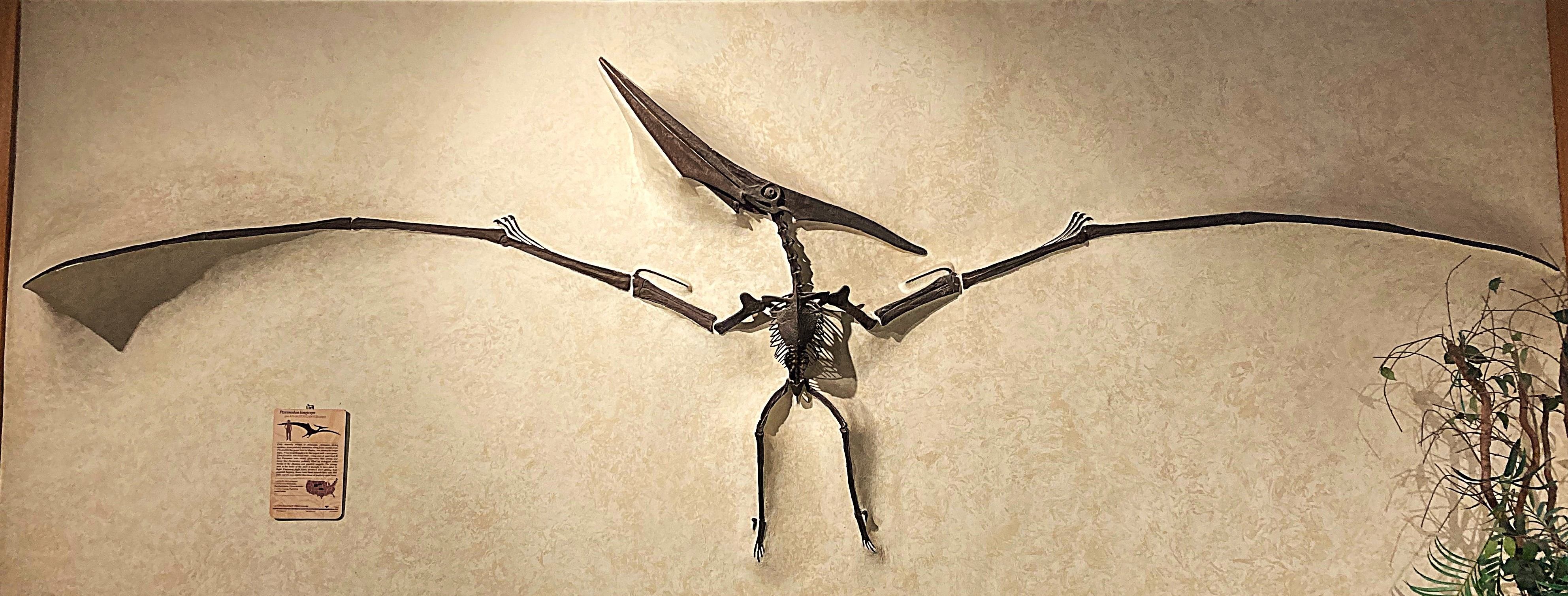
What ended the Cretaceous? / What killed the dinosaurs?
The Cretaceous ended 66 million years ago with the Chixulub Asteroid Impact. Before the impact, volcanic eruptions in India’s Deccan Traps may have played a role locally or globally in the decline of some dinosaurs, and the carbon dioxide released from the eruptions raised global temperatures which may have weakened some ecosystems. However, the effects of the Deccan Traps are debated, and the real dinosaur killer came 66 million years ago in the form of the Chixulub Asteroid which was about 10 km (6 miles) in diameter, about twice the mass of Mt. Everest, and collided with the Earth on the edge of the Yucatan Peninsula in the Gulf of Mexico. The event was arguably the single worst day on Earth in the history of life. While the Permian Extinction 252 million years ago was more deadly overall, killing 90% of all species, it took place over about a million years. The End-Cretaceous Extinction, or Cretaceous-Paleogene (K-Pg) Extinction killed about 75% of species worldwide, but took place geologically instantly, with the bulk of the damage occurring in a matter of hours.
Before the 1970s, a variety of hypotheses for the extinction of the dinosaurs existed. But in the late 70s and early 80s, geologist Walter Alvarez and his father, Nobel Prize-winning physicist Luis Walter Alvarez, put forward their theory that an asteroid impact had caused the extinction. Their theory was based on the presence of a global iridium layer at the Cretaceous-Paleogene boundary. Iridium is an element which is rare in the Earth’s crust, but common in many asteroids. Around the same time, the crater itself, a structure 200 kilometers (120 miles) in diameter and 1 kilometer (0.62 miles) in depth, was discovered by Antonio Camargo and Glen Penfield. It was later identified as an impact crater by Penfield with the help of Alan R. Hildebrand in 1990, with shocked quartz, a gravity anomaly, and tektites (cooled globs of molten rock rained down from an impact) providing the evidence. The crater, which dates to 66 million years ago, provides the smoking gun for the Alvarez theory and is widely and generally accepted as the primary cause of the K-Pg Extinction.
So what happened on that horrible day? First off, the asteroid impact itself released more than a billion times the energy of the atomic bombs dropped on Hiroshima and Nagasaki, obliterating the region of impact and anything that lived there. The initial blast created a megatsunami 4.5 km tall (2.8-miles) tall. The shockwave from the impact triggered more tsunamis, 30,000 times more powerful than any modern tsunami, reaching over 30 meters (98.4 ft) tall, and up to 1.5 km (0.93 miles) high in the Gulf of Mexico. The waves ravaged the coasts of North America along the Gulf of Mexico and up the Western Interior Seaway before spreading into the Atlantic. Meanwhile, an immense pyroclastic cloud of hot dust, ash, and steam spread from the impact site, with as much as 25 trillion tonnes (27.56 trillion US tons) of material being blasted into the atmosphere by the impact. This would have devasted large swaths of the world, particularly North America, due to the northward angle of the asteroid’s trajectory, meaning the greatest blast front was sent toward North America. One scientist has remarked that North America was very nearly “sterilized” by the catastrophe. But even animals on the far side of the globe were not spared the wrath of Chixulub. As ejected material reentered the atmosphere and fell back to Earth, it superheated the atmosphere such that for a few hours, temperatures might have reached several hundred degrees Fahrenheit, igniting forests and torching or boiling any animals that couldn’t find shelter. In the aftermath of the firestorm, vaporized gypsum from the Gulf of Mexico caused widespread acid rain, further destroying what was left of the shattered biosphere, and wreaking havoc with ocean chemistry. Lastly, dust and aerosols from the blast would have lingered in the atmosphere for years, limiting or entirely preventing the sun’s rays reaching earth, and a “nuclear winter” would have ensued, after which, carbon dioxide released from the vaporized limestone of the impact site would have caused a severe spike in global temperatures. It is unlikely that many large animals survived beyond the first day, but if they did, they would have quickly starved to death in the post-apocalyptic world devoid of vegetation.
In the end, 75% of all species were exterminated, including virtually all tetrapods (land vertebrates) over 25 kg (55 lbs). It resulted in a complete paradigm shift for life on Earth. When Earth’s forests and vegetation regrew, it was angiosperms that emerged as the dominant plants, supplanting hundreds of millions of years of conifer dominance. The extinction saw all marine reptiles, except for turtles, disappear. 100% of ammonites were gone. 100% of pterosaurs were gone. And gone were all of the non-avian dinosaurs. Even those groups that did survive suffered severe casualties. Crocodilians lost 50% of their species. Birds lost 80%. Lizards and snakes were reduced by 83%. And mammals suffered a catastrophic 93% loss! Those that survived, did so by being small generalists, able to make do with very little and survive in a harsh and uncertain world. And from those that did survive, came the variety of life we have on Earth today. Amazingly, despite their losses, mammals were able to bounce back, and for the first time since the Permian, 186 million years earlier, synapsids once again ruled the earth. However, mammals do not dominate the world as absolutely as did the dinosaurs, and the dinosaurs themselves, some 10,000 species of birds, still hold major ecological niches today, an echo of Earth’s most glorious era, the Age of Dinosaurs.
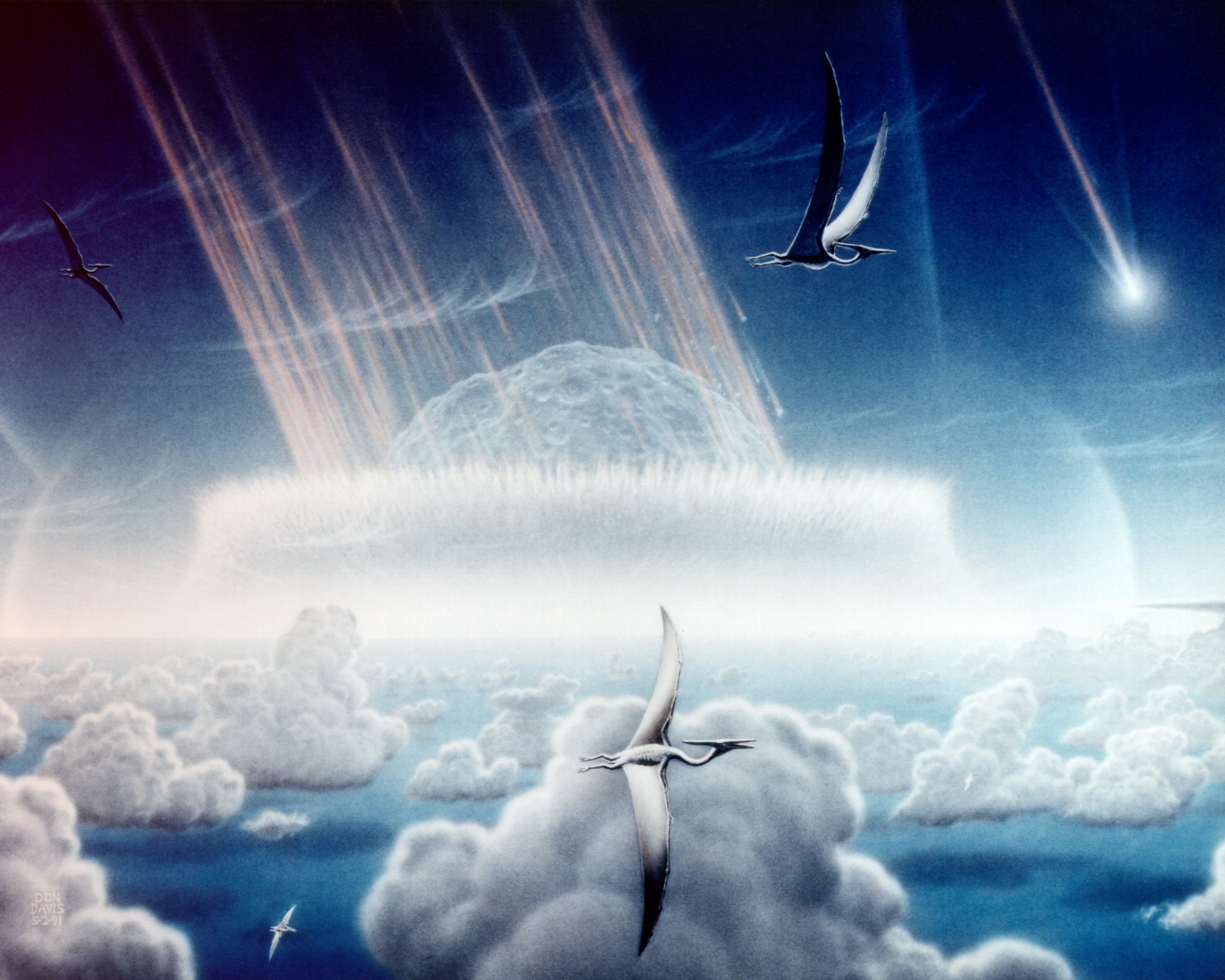
Cretaceous Animal List
Want to learn more about specific Jurassic animals? Here’s a list of all the Triassic animal bios on our website!
